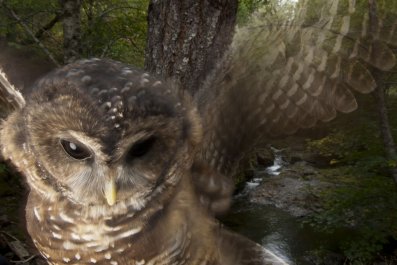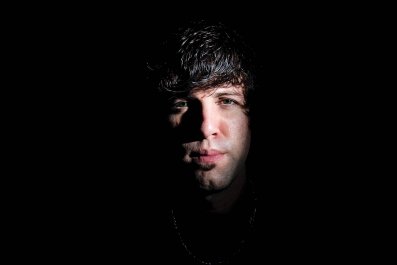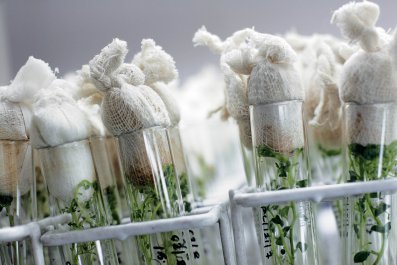Humans spend all summer slathering themselves with sunscreen, but you'll never see a fish or a frog or a bird put on anything to protect themselves from the sun. So how come they don't end up burned?
Scientists recently discovered that fish—and likely many other kinds of animals—can produce a chemical that blocks ultraviolet rays, protecting their skin from sun damage. This chemical, gadusol, had been previously found in some marine creatures, but it was thought to have arrived there via the animal's diet—until recently, it was known to be produced only by microbes like bacteria. In a study published this month in the journal eLife, researchers have shown that zebrafish can produce the chemical, and they identified the molecular pathway that leads to its creation.
"No one suspected that fish might actually make gadusol themselves," says Harvard researcher Emily Balskus, who wasn't involved in the study.
This pathway and the requisite genes are also present in many other creatures, like birds, amphibians and reptiles, and it's almost certain that these animals can produce the chemical as well, says study co-author and Oregon State University researcher Taifo Mahmud. This suggests "many animals have the ability to produce their own sunscreen," he says.
This gadusol-synthesizing pathway works via a completely different route than that in microbes. In the study, the researchers transferred the zebrafish genes responsible for making gadusol into fungi, specifically yeast, which were then able to produce the chemical. This could be a useful and cheap way of creating it.
"This is an important step towards commercialization of the compound," Mahmud says. Balskus notes that access to the types of "effective and environmentally friendly ingredients for sunscreens" that this study could lead to would be beneficial for all. "These molecules, which are naturally very abundant in the marine environment, absorb UV radiation very effectively."
Mahmud says UV-blocking chemicals similar to gadusol, called mycosporine-like amino acids and also produced by microbes, are already used in some lotions and anti-aging cosmetics. But he envisions a day when gadusol or compounds derived from it could be ingested, which could potentially provide longer-lasting sun protection than is currently possible. After all, unlike lotions, an ingested sunscreen pill wouldn't come off after a sweaty jog or a dip in the pool.
Of course, more studies will need to be undertaken to test its absorption and toxicity in the human body, but Mahmud is hopeful. "As gadusol is produced by fish and other animals, including birds, presumably it is safe for us to ingest this compound," he says. "So we hope that in the future it can be used in pill form, either as a systemic sunscreen or an antioxidant."





















